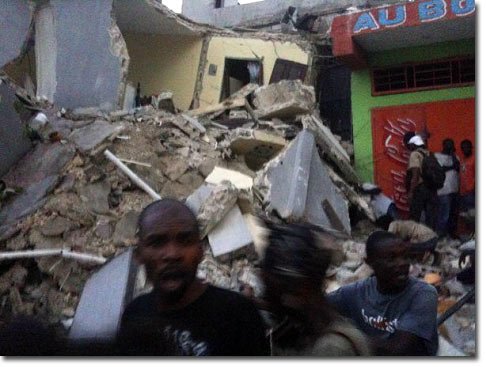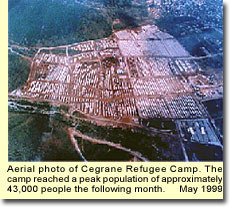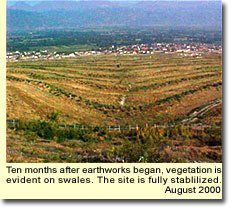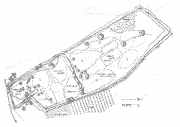Permaculture Relief Corps Forming For Haiti Earthquake Response?
Aid Projects, Community Projects — by Evan Schoepke January 14, 2010
The remarkable history (and possible future) of permaculture disaster relief, by Evan Schoepke of punk rock permaculture
Devastation in Port Au Prince. Photo: Carel Pedre, via twitter
During the war in Kosovo back in 1999, when displaced refugees flooded into Macedonia, Geoff Lawton and a crack team of eager permaculturalists secured international aid to design and implement the master plan for the Cegrane Camp Permaculture Rehabilitation Project, a large refugee camp that provided relief for over 43,000 people.
 Permaculture Disaster Relief |
Geoff created the design around water capture and storage. The final design called for 7.2 km of swales, with an estimated water holding capacity of 30 million liters, greatly reducing the flood potential. Many passive solar strawbale buildings were constructed by trained locals who quickly grasped the simplicity and efficiency of this natural building technique. Large gardens, composting toliets and chicken tractors all came together in a very short time span. The skills and systems thinking acquired during this process may help secure sustainable employment and economic development for the entire region for years to come.
Another successful implementation of permaculture relief took place in Cuba during the early 90s when Cuba was suffering from a crippling petroleum embargo. Working with a grant from the Cuban government, Austrailian permaculturalists, including Robyn Francis, traveled to Cuba to work with hundreds of Cubans on sustainable food systems design. Robyn, a well traveled expert in permaculture education in the 2/3rds (developing) world, helped local organizers use permaculture design prinicpals and techniques in their urban agriculture efforts. During this time, worker cooperatives were set up and market gardens and public transportation flourished. Little to no pesticides or fertilizers were employed, and catastrophic famine was avoided. This partnership has continued to be highly successful and now some of the most experienced urban permaculture experts in the world come from Cuba because of the courageous spirit of the Cuban citizenry. Currently, the Cuba-Australia Permaculture Exchange (CAPE) is working on sustainable housing developments using natural building to compliment the work they began together with urban agriculture.
 Water Harvesting |
Short Term:
Building sewage systems, composting toilets, compost and recyclying centers, rocket and solar stoves, temporary shelters (perma-yurts), water catchment, and plant nurseries.
Long Term:
Permanent natural buildings, water storage, earth works, renewable energy, permaculture food forests, broad-scale reforestation, farms, aquaculture systems, health centers and schools.
In 2003 following a intense hurricane, a team including Eric Davenport, an American architect, and David Doherty, a Peace Corps Volunteer, worked for several months with the local community to rebuild a rural village after severe flooding. This team was then joined by Frederique Mangones, a renowned Haitian architect, and engineer Frantz Severe of ORE draw to the challenge of designing low-cost housing adapted to Haitian rural family activities. In the fall of 2003, a team of permiculturalists also offered their expertise to the village project.
 |
 |
| Design for a new village |
- Low cost relief from floods
- Waste management & recycling to protect the environment
- Hygienic toilets to improve family health
- A community center to bring people together
- Privacy to reduce stress within families
- Green spaces to enhance quality of life
- Fruit trees to generate income
- Utilizing daily wind patterns, heat and cooling cycles
- Covenants to protect their community
If you are interested in the formation of a Permaculture Relief Corps like the one I’m proposing, please comment here.
My heart goes out to all those working and living in Haiti right now,
Sincerely,
Evan Schoepke: thejulianeffect (at) gmail.com
Principal of Gaia Punk Designs
Warning: Graphic images

The situation is Haiti ironically provides a perfect opportunity to design the community of the future - sustainable strategies will not have to fight with a flawed archaic infrastructure. It is now a clean slate, upon which we can envision a community oriented from the ground up toward composting toilets, biodiesel, passive solar, intensive recycling, chicken tractors, rainwater storage, and community gardens. Such a place might be the proving ground for our best ideas, and soon become a beacon to the world. Out of the ashes... Haiti could end up saving the planet!
ReplyDelete